Staging and automation of sound l in syllables, words, sentences, articulatory gymnastics for sound l
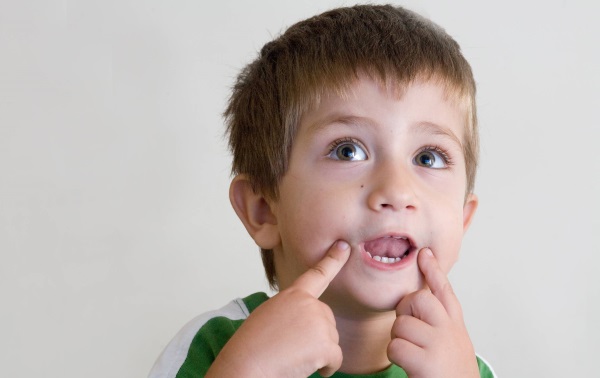
Incorrect pronunciation of the sounds “l” and “r” hurts the ears of both adults and children. Timely speech therapy correction - correction of pronunciation in an easy game form, until the child's self-esteem has decreased due to the ridicule of children. Setting the sound “l” is easy and fast, provided that the problem is identified in a timely manner and parents understand how important the correct articulation of the sound “l” is both for the formation of speech and for the confidence of the baby.
Variants of incorrect sound pronunciation
There are several versions of how the letter “l” is distorted when speaking:
- instead of the consonant letter “l”, a vowel is pronounced: “yozhka” - “spoon”, “ypsha” - “noodles”;
- replace "l" with "uva": "hoteuva" - "wanted", "euva" - "ate";
- change to "r": "rapsha" - "noodles", "rumble" - "elbow";
- instead of “l” on a quick exhalation with puffing out of the cheeks, “f” is heard, with an exit through the nose - “n”.
The child does not pronounce this sound for various reasons. And by the manner of pronunciation, one can understand what is the reason why it is difficult for him to say “l”, he cannot pronounce the letter.
Causes of impaired pronunciation of the sound l
There are several reasons when the pronunciation of “l” is not formed or is violated:
- the baby has not yet learned to speak this sound and he simply skips it: for example, “rain” instead of “rain”. At the age of 4-5 years, children are already mastering it, and by the age of 6, the child is no longer just talking, but can already differentiate a hard sound from a soft one;
- interdental pronunciation is characterized by incorrect setting of the tongue, although acoustically it turns out distinctly;
- bilabial pronunciation: the tongue lies on the "bottom", which is typical for the sound of the English language. This happens when a child has to communicate in a family in several languages;
- movable lower lip and relaxed tongue - it turns out "v" instead of "l": "development" - "fork";

In these cases, articulation disorders are explained by an incorrect pronunciation algorithm, namely, the position of the tongue is not formed. There are also violations when differentiation is impaired due to improper breathing, the wrong position of the tip of the tongue, its middle:
- the formation of sound occurs due to the lips, not the tongue;
- the tip of the tongue goes down instead of resting on the incisors;
- the middle of the tongue is raised, and the tip of the tongue is lowered, but vice versa.
The described violations are due to the peculiarities of the articulatory apparatus. In these cases, automating the correct sound l will take just a couple of sessions with a speech therapist. You can also quickly deal with this at home. If, however, the production of sounds occurs when associated with organic, functional disorders of the central nervous system, a phased systemic production and automation of sound l is necessary.
Sound setting l
Before starting classes, the child needs to be explained in detail and shown how to pronounce the sound correctly. At the same time, a speech therapist or a parent must show the child how the articulation apparatus should work correctly, and visual materials can also be used.
Articulation of sound l
Correct articulation of the sound l: a sharp tongue is raised behind the upper teeth, rests against the alvioli (tubercles in the sky located behind the upper teeth). The shape of the tongue at the same time resembles a saddle, the air comes out along the edges of the tongue.
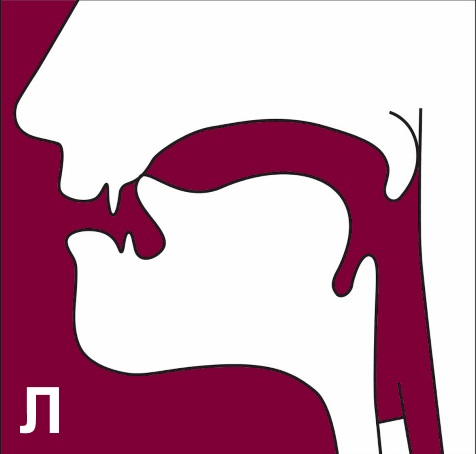
Articulatory gymnastics for sound l
There are several ways of staging the sound l, among which the first place is taken for the formation of the sound l. The child will like it due to the fun played articular exercises:
- blow soap bubbles, blow on candles, boats on the water;
- “boat”: a relaxed wide tongue should be placed on the lower lip and try to roll the boat out of it without lifting it;
- "Snake": stretch your lips, as if in a smile, and stretch a sharp, hard tongue forward;
- “the longest tongue”: stick it out as far as possible and try to get either the chin, or the tip of the nose, or the cheeks;
- “horse”: open your mouth, touch with your tongue between the upper incisors and tap them there so that you get the clatter of horse hooves;
- "turkey": open your mouth, relax your lips and stroke your upper lip with your tongue, moving your tongue from top to bottom, saying "bl".
There are many videos on how to do these exercises to prepare for the sound L. Classes for preschoolers are held in a relaxed atmosphere 1-2 times a day.
Sound Automation L
Before you start teaching your child to pronounce the letter L, it is necessary to warm up with articulatory gymnastics. This will prepare the speech apparatus for work, tones the tongue, lips and cheeks. In fact, gymnastics is speech therapy exercises for setting isolated sound.
We offer a summary of classes on automating the sound L in syllables, sentences, which will help mothers organize this process at home. Also, riddles about the letter L are stimulated to isolated pronunciation of sound, since the answer is L itself. Once the child has learned to pronounce L in isolation, proceed to automating the sound L in direct syllables.
If the child does not yet read independently, first say it yourself, and then offer the child:
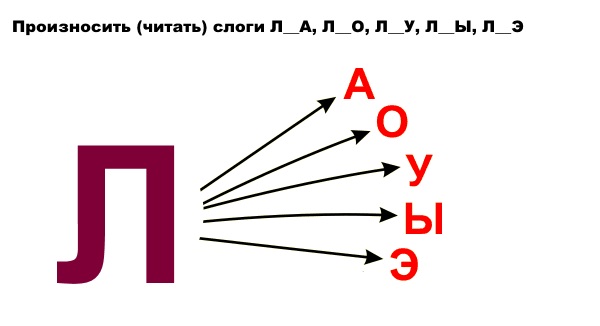
And after mastering, in reverse syllables:
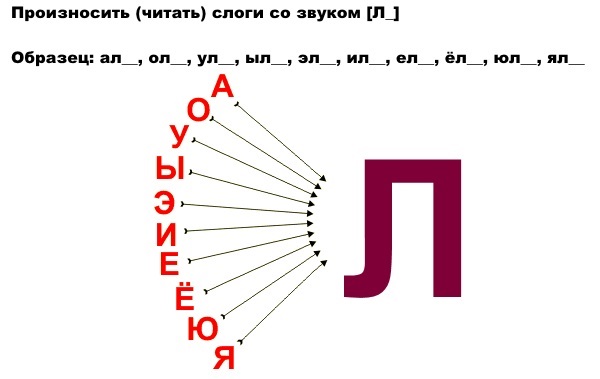
The next stage is the automation of L in words. You must follow this sequence:
- sound at the end of the word: floor, hall, corner, channel, hit, pinched;

- sound in the middle of a word: wolf, sense, sorry, jackdaw, violet, volcano, hairpin, mower;

- the sound is paired with consonants: flag, club, flame, block, flag, globe, planet, notepad;

- in one word there are 2 sounds: swam, weeded, climbed, broke, swallowed, cried, threshed, bell.

In order to put the sound in words, phrases, you must first master solid pronunciation, because when softened, it is harder to pronounce the sound.
After mastering L in words, master the sound in phrases and sentences:
ripe strawberries, tin soldier, broken saw;

conjugate sentences by speaking first the phrases in the first person, then in the plural and in the third person: “I broke (a) a bicycle - We broke a bicycle - She broke a bicycle.”


Then we read, we learn verses for the letter L. In special poems, sound is found in almost every word.
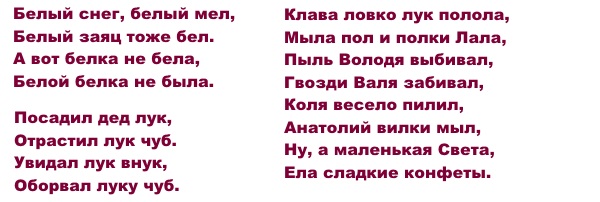
When reading, repeating rhymes, you should pronounce the words measuredly, slowly, so that the child pronounces the sound clearly. It is necessary to speed up speech in tongue twisters and riddles. For example, "Here's a funny bun rolled like a ball." Or “Polkan pushed the stick with his paw.”
Pronunciation Games
The game form of speech therapy classes allows you to arouse interest in the baby, get carried away with the process. Here are examples of games to reinforce the pronunciation of L:
- "Paths": a large letter L is written on a piece of paper and wavy paths from it to objects that begin with this sound. The child needs to put his finger on the letter and lead from it along the line, pronouncing the sound all the time, and at the end name the object.
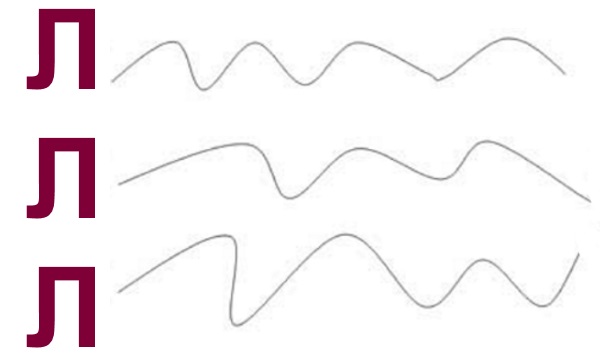
- "Koloboks": it is necessary to make a fox figurine and 10 koloboks, as well as pictures with words containing the letter L in different parts of the word. If the kid correctly calls the word from the picture and clearly pronounces the sound L, then the gingerbread man runs away from the fox, if not, she eats it.
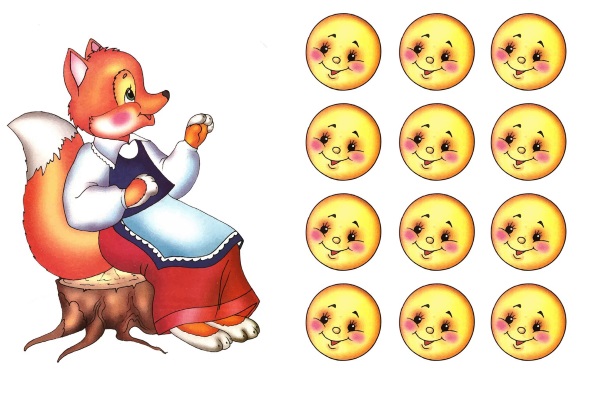

- "Object pictures": prepare pictures with words with l and invite the baby to name the image, and then find the necessary item. For example: show a chair, show an apple.

The structure of an individual speech therapy lesson
A methodically competent sequence and duration of each of the exercises is the key to quickly mastering the sound L. An important condition is that the child does not get tired. To do this, adhere to the following time frames:
- Gymnastics for the articulatory apparatus - no more than 7 minutes.
- Sound production and automation - 10-15 minutes. Of these, the first 5 minutes repeat the material of past classes, and the rest of the time is devoted to new syllables, words, sentences.
- Phonemic work on consolidation - 10 minutes.
With kids 4-5 years old, you need to do up to 20 minutes daily. With older children - half an hour.
The time frame should not be rigid, because on some days the baby may tire more quickly, and on others he wants to exercise longer. If your child is having difficulty sustaining attention, suggest doing the exercises in parallel with other activities. For example, a special coloring book with the letter L, in which the baby will paint over it and repeat the syllable after the mother.
- Essay by a speech pathologist
- Defectologist-speech therapist: what kind of specialty, where to study
- Speech therapy massage for children at home
- Creation of a developing environment in a speech therapy room
- The development of fine motor skills of hands in preschool children
- Sound analysis of the word: what is it and how to do it correctly
- Kemerovo Savelyeva Elena Nikolaevna

 Live Journal
Live Journal Facebook
Facebook Twitter
Twitter